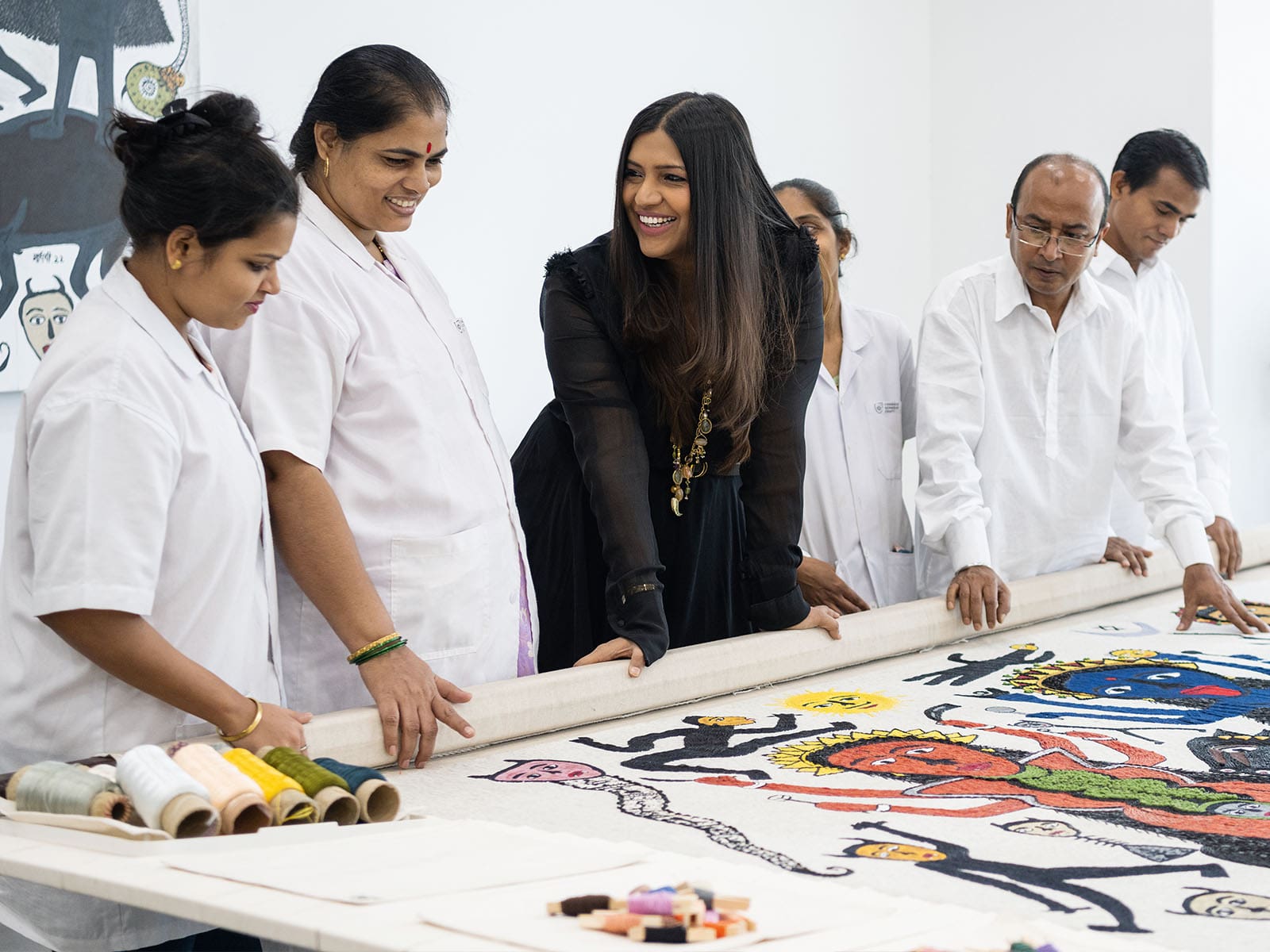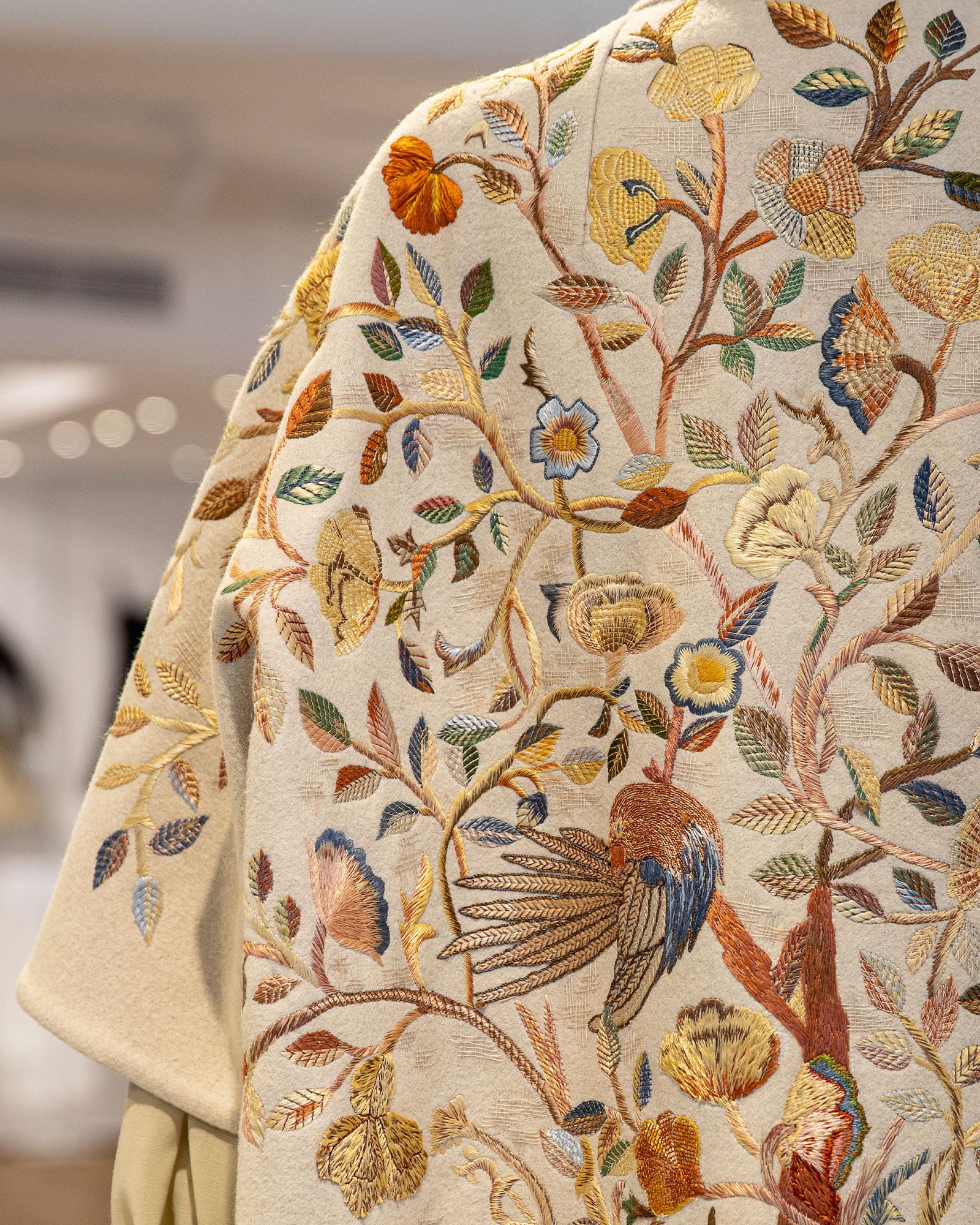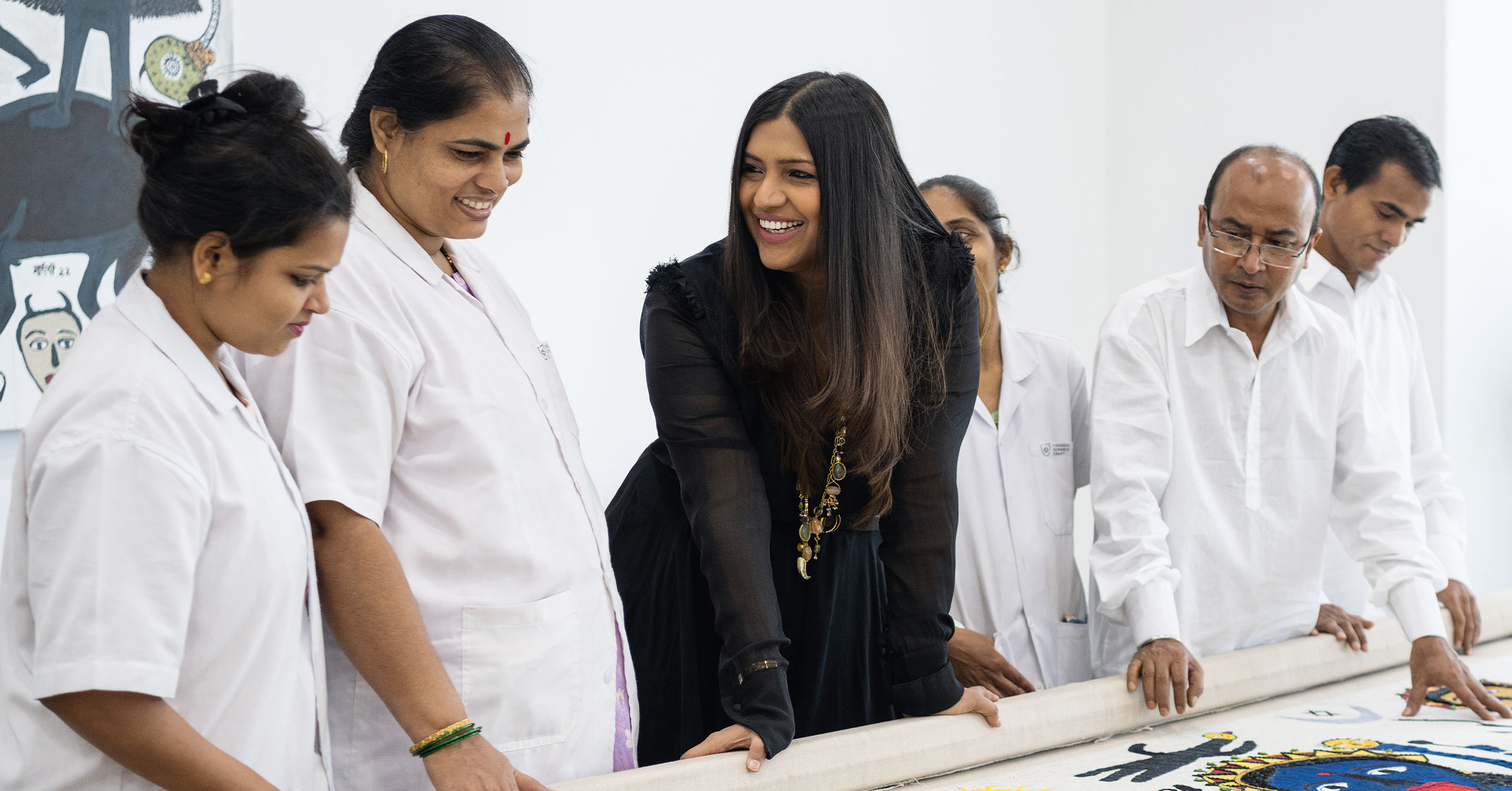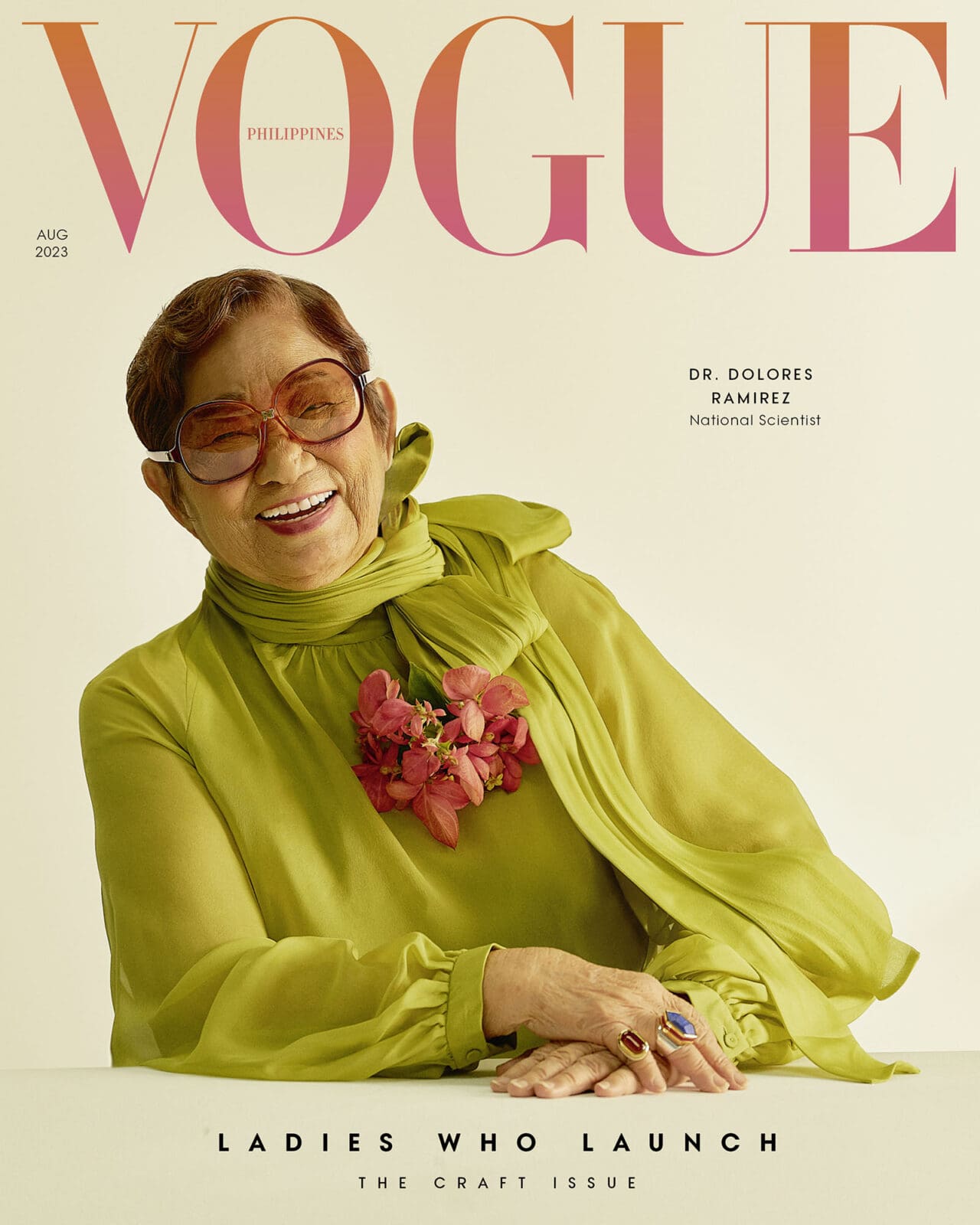Courtesy of Chanakya school of craft.
In Chanakya School of Craft, women from different walks of life learn the art and heritage of 1000-year-old textiles.
Mumbai is a city that insists on densities. Horns beep incessantly and the cawing of crows and mynas fill the sky. Lush bougainvillea hedges jostle above the sidewalks, fenced in by iron grillwork that slip into curlicues. Indo-Saracenic buildings flaunt their obsession with handsome moldings and eclectic flourishes. At almost every corner, onion domes peek through.
Here, courtyards unfold into another, with doorways and archways collapsing into the next, ushering an infinity of Mughal patterns. Sentinel Banyan trees tower over the tide of townsfolk. An urban patchwork of faded glory, Mumbai will not let you forget its history.
It is history in the remaking we see at the visit to the Chanakya School of Craft in Mumbai. Traditionally, men are the artisans who engaged in the Indian arts of embroidery. But, at the Chanakya foundation, Indian women from varied economic classes are given the opportunity to learn various heritage textile arts, some of which are over a millennia old.

Maria Grazia Chiuri, womenswear creative director at Christian Dior, has always been a champion of feminism and fashion. But beyond logos and catchphrases stenciled on Tees, she has shown how the seeds of her working relationship with Karishma Swali and the teams at Chanakya ateliers has blossomed into a revolution. They demonstrate, with practical, magical realism, what women’s empowerment through fashion can mean for a generation.
“The youngest student was 16, the oldest 56,” the guide confides as we walk past the ladies at the foundation. With warm smiles and hands rested mid-stitch, we witness the preservation and evolution of Zardosi and Zari embroidery, crochet and lacemaking, katha and appliqué techniques at work. They speak the quiet language of craft: sifting with eyes, engaging in the habit of exquisite stitches, fingers becoming intuitive, their minds collective. Stretched against the wood of a loom’s edge, the needles bob in and out, in devotion to the minutiae of couture. Needle to thread, refashioning this feminine future.

In a tangent room, an exhibition, called Mul Mathi, is housed. From the Roots, based on the works of Indian artists Madhvi Parekh and Manu Parekh, we discover the heights of high craft twined with their art. Here, a staggering amount of textural embroidery replaces their brushstrokes. Micro topographies of stitches sprawl across the immense canvases. These are thousands of minutes captured in thread. This inspiring peek into the highest craft and art shares a space with the students who are just beginning on this path.
What is truly remarkable is the social impact that the Chankya foundation has. The skills taught here can lead to invitation as an artisan at the Chanakya atelier, or the women can choose to begin their own embroidery businesses. With continuing relationship between Dior’s Maria Grazia Chuiri and Chanakya’s Karishma Swali, the path to help create a generation of Mumbai women who have agency over their future, remains bright.
Vogue Philippines speaks to Raja Ghanta, vice president of growth and special projects, about the extraordinary school.
Vogue Philippines: How have your students grown?
Ranja Ghanta: It’s been an inspiration to see the students’ sense of color, design, and know-how grow through the program and more importantly to allow them to build a sense of community within the school.

Historically, craft is passed down from father to son in India. Our school is unique in that it not only teaches the intricacies of hand embroidery, but the curriculum exposes our female students to the facets of culture and design. Training women in color theory, semiotics, and art history in a simple and engaging manner helps the students embrace craft in all its aspects.
Students are also taught skills useful for a professional environment such as the English language, craft history, and finance management skills. To give students a holistic view, we coordinate visits to museums, workshops, and other culturally significant places. We encourage entrepreneurship so students can leverage skills learned in our curriculum and while we offer women who complete our internship a place in a female atelier, some choose not to join. But we keep in touch with ex-students and meet them annually to ensure we stay connected. The school has educated over 1,000 women to date, teaching over 300 hand embroidery, hand weaving, and macramé techniques through a holistic curriculum anchored through the voices and lives of historical female figures like Coco Chanel, Frieda Kahlo, and Sarojini Naidu.

Could you tell us more about the mechanics of the school?
All materials as well as tuition for the school are provided by the foundation. We also provide an honorarium to cover travel to and from the school. The school is open to all women on a “first come, first served” basis, with priority given to women from low-income backgrounds. The program is structured to take as long as one needs based on one’s schedule, and it is focused on building craft excellence in one’s own time. Craft, culture, and creating new autonomy for women have always been interlinked. In rural India, most women are economically dependent on their male counterparts. Though they might be equal partners in the welfare of their family, their contributions remain relatively unknown. It was important to us to provide women an inclusive environment with equal opportunity to express themselves freely and creatively.
What do we see in craft in the future?
Craft is a shared global language and has the power to bring us all together; at Chanakya, we are inspired by India’s innate nature of non-violence and universal compassion. Hand embroidery for generations has been one that is free of violence, pollution, carbon footprint, and a catalyst for internal harmonies, and in this way more relevant than ever.
Sustainable fashion concerns more than addressing fashion textiles or products. It comprises addressing the whole system of fashion, considering fashion from the perspective of many stakeholders and producers, all living species, contemporary, and future generations of our planet. We are so encouraged by the future and its possibilities. For us, providing women with creative freedom and the opportunity to be autonomous is top of mind. In the future, we hope to create a global network where design students from across the world can learn ways in which craft can be seamlessly integrated into fine art, couture, and design.

